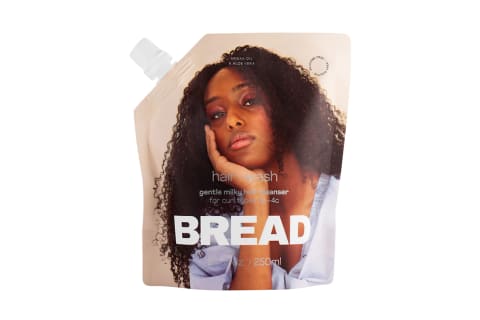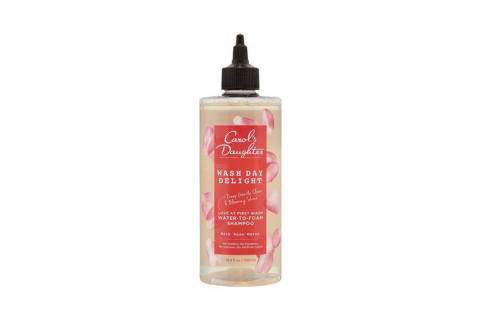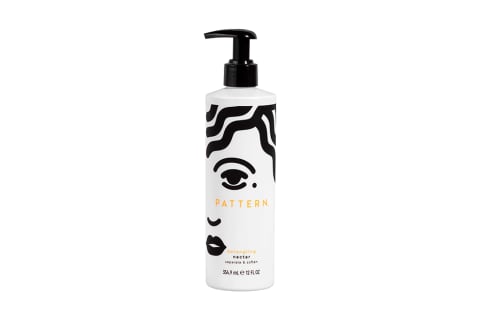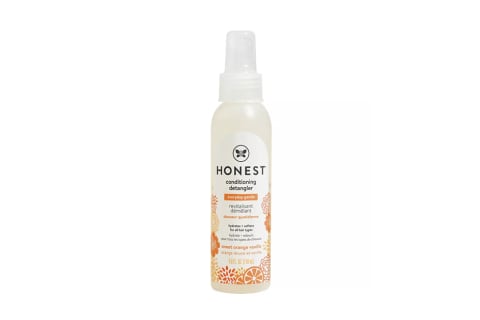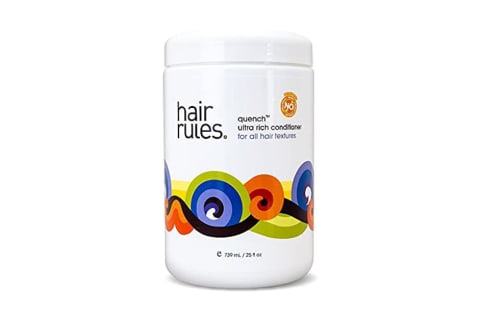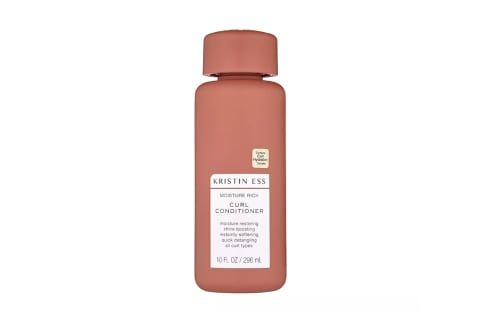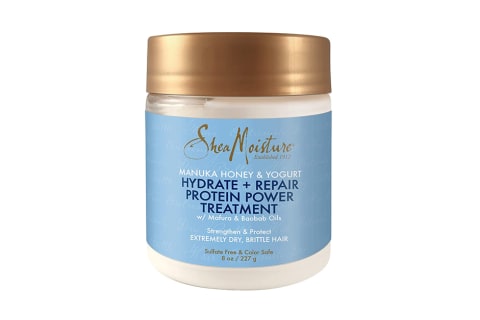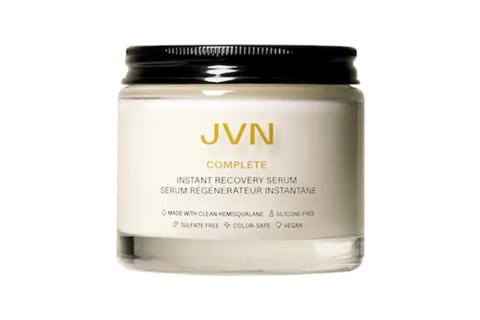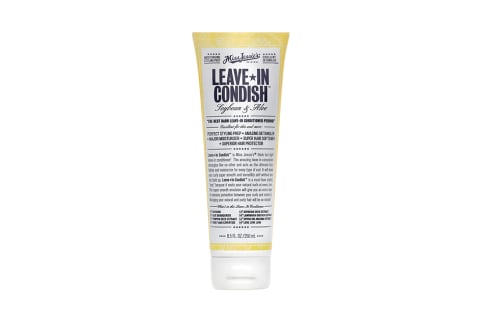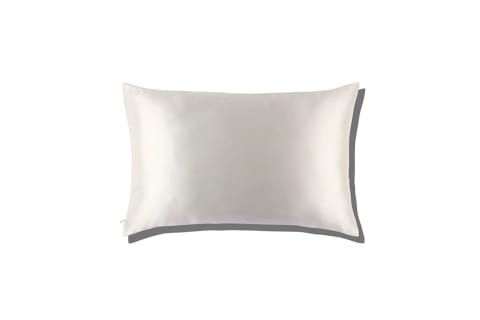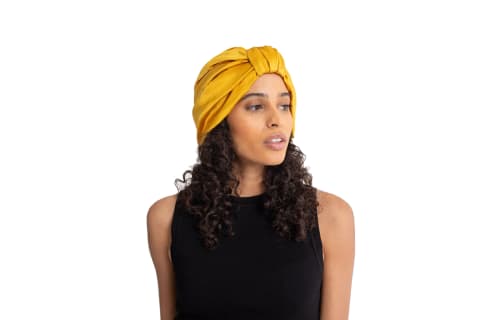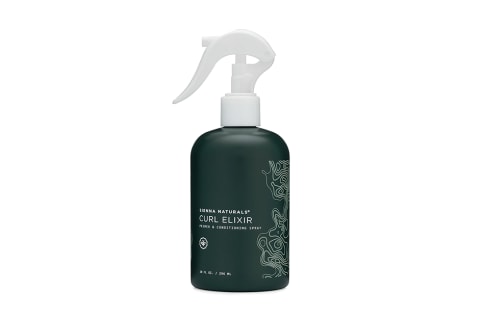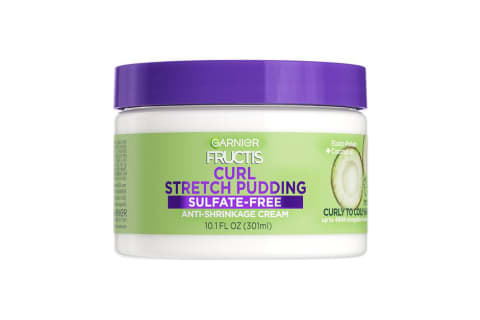How To Take Care Of Curly Hair: Tips From The Experts


Happy, healthy curls are the dream. But how do you make the dream a reality? Well, the answer to that question will be different for everyone. Hair care, and curl care especially, is a very personalized matter.
But armed with the right information, pro tips, and products, you'll be on the right track. Here, our guide for caring for curly hair.
First things first: Identify your curly hair type and needs.
Answering the question of how to care for your hair isn't a straightforward one because there is so much variety within the hair type! Factors like curl pattern, porosity, scalp conditions, length, and thickness of the hair can all influence what your routine might look like. There is no one-size-fits-all approach to curly hair. In fact, most folks with curly hair change up their routines based on the day!
So as we dive into the nuances of how to care for curly hair, it's important to know the fundamentals of your hair.
Type
Curl type refers to the shape of your curl pattern. It ranges from type 2A and 2B (loose waves) to 4C (tight coils), and everything in between. Broadly, curl types fall into three major types which are type 2 waves, type 3 curls, and type 4 kinks and coils. Within each type, there are three unique subtypes. So, for example, type 4 will have type 4A (densely packed coils), type 4B (zigzag curls), and type 4C (miniature spirals).
While it'd be simpler for curls to be categorically exclusive and stagnant, most people have several patterns on their head—and they may even change depending on the environment or with time.
Want help deciphering your own curl pattern at this moment in time? Take our curl-type quiz.
Porosity
"Hair porosity describes how the hair's cuticle absorbs and holds on to moisture in its pores—hence, the term porosity," says hairstylist Miko Branch, co-founder of hair care brand Miss Jessie's.
The spectrum of porosity ranges from low to high. Low porosity hair will mean the cuticle is tightly packed, which means the hair fiber doesn't easily absorb moisture but will take longer to try when wet because it holds on to water it does have. High porosity means that the cuticle is loosely packed (aka more porous). This type holds water based products more easily and can become overly saturated.
Scalp conditions
Scalp health plays a role in hair health, and there are a few things to consider when picking your products. Are you prone to buildup? If so, be sure to prioritize a thorough cleanse semi-regularly. Is your skin sensitive? Then you'll want gentle, nonirritating formulas.
Length & density
How long you keep your hair will weigh several of your hair care choices. And I mean that quite literally: Hair length can weigh down your curls, stretching them out and loosening your curl pattern. So if you're interested in keeping the tightness of your curls, you may need a stronger hold curl cream. Another way length influences hair health: It takes longer for oil from the scalp to travel down the hair shaft to condition the ends, so those with long hair may need to apply more leave-in conditioner on the lower half of the hair shaft.
Hair density will influence your hair care routine, too. "The density of the hair is determined by how close your hair strands are to each other," says celebrity hairstylist Ryan Richman. "This, in turn, determines how thin or thick your hair appears." For those with low density, you may look for volumizing products; whereas those with high density will need more smoothing and control.
Lifestyle and environmental considerations
This is just a catchall subcategory to say that a lot of other factors influence your precious curls. Weather, environment, nutrition, mental health, hormones, and so much more all play a factor in healthy hair growth. Some of it is in your control; other factors aren't—just be mindful of what you can and do your best.
Tips to care for curly hair.
I have wavy and curly hair: When I amp up the curls and keep my hair shorter, they hover around 2C to 3B. Lately, I've been wearing my hair long and purposefully stretching out the curl into looser waves, so I'm a solid 2B.
Overall curl care is one of my favorite topics in beauty: It took me a long time to figure out how to best care for my hair, and so I love talking to professionals and other people about what they do and recommend. Every curl journey is unique, and I love hearing about them all.
Here, some of the best advice straight from the professionals:
Mind the wash schedule.
One of the most enduring questions in the beauty space is how often should I wash my hair? It's a complicated question because the actual answer basically boils down to "whatever feels right to you!"
However, there are best practices for deciphering your ideal wash schedule, and generally those with curly hair should wash less. Because of the curl pattern, it takes longer for the natural oils on the scalp to reach the ends of the hair fiber. When you wash it too frequently, you're continually resetting your oils back to square one (the root), so they never have time to actually make it to the ends.
Now exactly what "washing less" means in practice is entirely up to you and is likely influenced by many other factors. However, just know that if you wear your hair curly, stretching the time between shampoos will help keep the strands conditioned.
It's also important to note that when we say wash less, we mean don't use shampoos. If you need to rinse between shampoos, you certainly can.
"I want to emphasize that wetting, rinsing, and or conditioning the hair daily is not equivalent to shampooing. Shampooing is when a specific cleaning agent is applied to the hair or scalp for hygienic purposes," says trichologist Bridgette Hill.
If you want more guidance on how to craft your shampoo schedule, Hill provided her go-to tips:
- Fine to medium hair density with a straight-loose curl textured hair: "These textures may need to cleanse every other day; however, the goal is to extend the need to unnecessarily disrupt the microbiome of the scalp," she notes. "My suggestion is to use a hydrating, gentle shampoo—retaining moisture in the hair and scalp is important."
- Fine to medium hair density with a medium to very fine tightly coiled textured hair: These hair types should shampoo every other day, and "would benefit from adding in a conditioning wash every so often as well," she says.
- Medium to thick hair density with loose curl textured hair: "This texture and hair type should not be shampooing more than every two to three days. The healthiest heads of thick hair typically have mastered the once-a-week shampoo. The key is finding the style and routine," says Hill.
- Medium to thick hair density with a loose curl to tightly coiled textured hair: "This texture type encompasses a wide range of cultures and ethnicities. The frequency would then be guided by characteristics of the genetic hair structure. For example, as a black woman, my genetic hair structure does not perform best if the hair is over-cleansed. It creates too much disruption to the cuticle; therefore, I chose to rinse daily and shampoo very infrequently."
- Tightly coiled texture hair: "Typically, tightly curled and coiled hair textures shy away from frequent shampooing and incorporate cleansing the scalp with tonics and oils in addition to their detoxifying shampoo. I refer to this as a scalp cleansing regimen," says Hill. "It requires daily active participation of paying attention to the scalp needs and how it feels, similarly to your skin care regimen. The scalp remains healthy by regularly alternating between using detoxifying oils, water-based tonics, and serums. The detoxifying shampoo is the final step in the hair and scalp regimen, which is done as frequently as every 10 to 14 days."
And as always, your hairstylist will be able to help you find a shampoo schedule that works for you.
Skip sulfates.
Sodium lauryl sulfate (SLS) and sodium laureth sulfate (SLES) are common cleaning ingredients in shampoos. There is lots of debate about the "toxicity" of the ingredients, but that's a conversation for another time. Those with curly hair should avoid them for one very simple reason: They're very harsh and drying!
Curly hair is naturally dryer and more prone to breakage, so you need to pick very delicate cleansers. Think of it like your skin: If your skin was prone to irritation, you'd switch to a gentle cleanser, right? Well, the same applies to your strands!
The good news is there are many excellent sulfate-free shampoos on the market. Look for options that are further buffered with hydrating ingredients like botanical oils and butters: Excellent options include shea butter, coconut oil, oat oil, and so on.
Co-washing (or conditioner-washing) can also help keep the hair clean—while hydrating in the process.
"The idea is to use conditioner, though not just any conditioner, as a replacement for shampoo. An ideal co-wash very gently cleanses the hair using mild surfactants, while a typical shampoo uses more concentrated surfactants that really work to deeply cleanse the hair," says Sunny, owner of Lumiere Vive Salon.
If you decide to incorporate co-washing (an excellent idea), do so alongside the occasional shampoo session for a deeper clean. This can help you avoid buildup and scalp irritation. "It's very important to deep cleanse your hair; it's just that many times it may not be necessary as frequently," notes Sunny.
Try these:
Detangle with caution.
Oh, wouldn't it be so simple if detangling was as easy as running a brush through your hair? Alas, people with curls don't really have that option. "In textured hair, the cuticle is slightly lifted, and normal daily friction can easily cause strands to tangle and knot around themselves," says hairstylist and cosmetologist Faith Huffnagle, director of education at Prose, says about detangling.
Being too rough during the detangling process can mean breakage and other kinds of physical damage, such as split ends. To avoid that, thoroughly coat the hair with a detangler. Detanglers create a physical barrier around the hair fiber to protect it during the combing process.
If you want to detangle in the shower or when the hair is already wet, a conditioner can also do the trick.
Then when you go to detangle, always start at the bottom and work your way up in small sections. Starting at the top is a recipe for pulled hair and shedding.
Try these:
Use deep-conditioning products and treatments.
Curly hair needs hydration. And lots of it. I practically drown my hair in conditioner! My bathroom is littered with shampoo bottles that hardly have a dent made in them, while I can't seem to keep my stockpile of conditioner adequately supplied because I'm using it so fast.
"Conditioner's role is to increase the moisture content of the hair and improve its elasticity, smooth the cuticle, and soften the hair fiber," writes Sarah Roberts, a hair consultant and author of You and Your Hair: The Ultimate Healthy Hair Masterclass for Afro Textured Hair in a previous story about the types of conditioner. And because curly hair naturally struggles with hydration and elasticity, it's a vital step in caring for the strands.
If you have fine hair or are conditioning frequently, opt for something with a lighter consistency—anything too thick has the potential to weigh the curls down. Those with fuller coarse hair will want something very thick such as a conditioning mask. And anyone with damaged strands should use a protein treatment about once or twice a week.
Try these:
Leave-in products are your friends.
Hair hydration doesn't end in the shower—to the contrary. How you hydrate your hair after washing will make a world of difference in how the curls take and hold their shape.
"Leave-in products provide extra moisture to the hair, help protect it from damage, and help detangle those fabulous curls," says hairstylist Millie Morales. "I love that you don't need to wash out because having a nice smell all day is magic."
Try these:
Be cautious of over-processing and heat styling.
Curls are structurally fragile. That's because at each bend and curve, there's more opportunity for breakage. So those with curls need to be more cautious about how much they style and process their hair, as it has the potential to weaken the strands further.
A small lesson as to why: Hair fibers are actually held together by hydrogen bonds. These hydrogen bonds can be broken down by heat and other chemical processes. For example, when you flatiron your curls, the bonds are broken down and manipulated so the hair appears straight.
They can then be "reset" by water (which is why your curls spring back when wet). However, when they are continually manipulated, it can erode these bonds resulting in damaged hair and lifeless curls.
This is not to say that coloring, chemically altering, or heat styling is a hard no—however, it is to say that it requires more care and attention when you do it.
"It's not that these are off-limits," says board-certified dermatologist and curl expert Raechele Cochran Gathers, M.D. "Just be smart about your use of your flat irons, hairdryers, or curling wands. Ultimately learning how to use these is more important than not using them altogether." A smart way to use them? With heat protectants like these.
Protect and refresh between washes.
The best way to keep curls intact is through silk accessories. Tossing and turning at night can mean tangles and frizz.
"Sleep with a silk or satin pillowcase, head scarf, or cap, which allows hair to slide as you toss and turn while sleeping. Silk and satin prevent friction—which leads to hair pulling, tugging, stretching, breaking, and tangling—and these smooth fabrics help retain the hair's natural oils," says Branch. But the benefits of silk don't stop there: It is hypoallergenic, antimicrobial1 moisture-wicking, and breathable.
And when styles start to fall flat, a curl refresher or mist of water can help curls spring back.
"You can use a spray bottle or mister," says Morales. "Fill that spray bottle with water, and mix in a little leave-in conditioner for extra hydration to your curls during the week! Try not to go too crazy with the amount you put in the spray bottle, just enough to get a cloudy mix." If DIY isn't your thing, there are plenty of curl-refreshing sprays that you can utilize, too.
Cocktail and layer styling products.
Most of those with curly hair will need to mix and match a few products to get their desired look. This can mean anything from mixing oils with curl creams to smoothing serums with mousses or gels, says Morales.
"The serum gives the strands a silky, polished appearance, while the mousse adds volume and defines curls without weighing them down," says Morales. "Or another great mix is coconut oil and styling gel, as it allows supreme hold without leaving your curls crunchy and dry."
If you're more into layering, one popular routine is the LOC method. The LOC method simply refers to a layering technique—leave-in (or liquid), oil, and curl cream—so you can sub in any products you please. "For me, the LOC method is something you do whenever you're doing a wash-and-go curly style," hairstylist Anthony Dickey, founder of Hair Rules, once told us.
Try these:
Get a curly girl hair cut
The right haircut can bring curls to life—creating dimension, volume, the appearance of density, more movement, and improved curl pattern.
Often curly hair cuts are done on dry hair: So before cutting, the stylist will wash, diffuse, and style the hair so that they can experience the natural curl pattern. This will also guide the stylist where to create layers, as they can see how the strands fall.
Be sure to visit a hair stylist who has experience in your specific curl type (an easy way to find out: check out their Instagram to get a feel for their past work.)
Find a hair oil that works for you.
Hair oils are a valuable tool for almost all hair types—but especially for those with curly hair. Oils can help seal in hydration, create a protective barrier on top of the hair fiber to help buffer against damage, and provide nutrients.
Here are some of the most popular oils for hair health. However, there are many hair oils to pick from, so consult your hair stylist for a more personalized recommendation.
- Olive oil. this multitasking oil is rich in nutrients for dry, curly hair. It’s also an excellent protector: Research suggests2, olive oil can also act as a lubricant for strands to reduce breakage.
- Coconut oil. a long standing favorite, coconut oil has low molecular weight3, it's able to penetrate easily into the hair shaft and absorb better than other common oils (rather than sitting on top of it).
- Castor oil. This oil is used in many commercial hair products for a reason: as a medium-weight oil, it can act as both an emollient and an occlusive. It’s also high in the antioxidant vitamin E, which helps prevent free radical damage.
- Rosemary oil. Rosemary oil is a great addition to a carrier oil that promotes hair growth.
How to sleep with curly hair:
There is nothing more frustrating than getting your curls perfectly set, styled, and bouncy—only for them to appear flat come morning. Figuring out how to best protect your curls while you sleep is one of the biggest game changers on your hair styling journey. Once you figure out how to do so, it can mean less heat styling, more time between washes, and less wear-and-tear overall.
Throughout this article, I’ve talked at length about how everyone's routine will be unique to them. And, hate to say it, but this section is no different! How you protect your curls in the evening will be dependent on your curl pattern, styling goals for the next day, product preference, how oily your scalp gets, and so on.
However, here are some good general tips to incorporate. Not all of these will work for every head of hair, but they can at least offer some inspiration for your own routine.
- Sleep using silk products. Silk products—be it pillowcases, scrunchies, headscarves, turbans or bonnets—can reduce snagging and tangling as you toss-and-turn in the evening.
- Use smart up-dos. Pulling the hair up can mean the roots will remain lifted, and the curl pattern more intact. The most popular methods are the pineapple or a loose bun.
- Try to avoid switching sleep positions. Easier said than done, but trying to sleep in a singular position throughout the evening can limit tangling.
- Sleep in plaits for waves. For those with type 2 waves, sleeping in braids will help you avoid flattening the strands throughout the night.
- Use nighttime treatments. If you are planning to wash in the morning, use a night hair mask or treatment the evening before for a heavy dose of moisture. These treatments can infuse the hair fiber with hair-healthy nutrients over the course of the night.
- Use a dry shampoo the night before. If your scalp tends to get oily overnight, adding a light touch of dry shampoo before bed can help soak up and balance the oil. This can help deal with flat, greasy roots that many folks get in the morning.
FAQ
How often should you wash your curls?
Wash routines are highly individualized, but generally, those with curls should wash their hair less frequently: One to three times a week is a good average, but again, that will change based on curl types, activity level, scalp type, and weather.
Can you straighten your curls?
Yes, you can do anything you want to your curls—including straightening them! However, doing it repeatedly with high heat will likely cause damage over time. If hair health and curl integrity retention are important for you, be mindful of how often you heat style your strands. Cool it when you start to feel the hair fiber become more coarse, and always use a heat protectant.
How often should you trim curly hair?
Trims are largely dependent on your hair and length goals (shorter styles typically require more maintenance, while longer styles can get away with more time between trims). Every three months is a good base rate, but you should increase that if you are experiencing split ends.
What is a good hair care routine for curly hair?
A good hair care routine is one that keeps your curl integrity intact, scalp soothed, and hair fiber hydrated. It's also one that easily fits into your life. Needless to say, that will look different on everyone. Here, how to make a hair care routine.
The takeaway.
Curl care is highly personalized. Not only will your curl type influence your choices, but so will factors like porosity, length, scalp type, and your lifestyle (i.e., how active you are or where you live). However, there are several styling and care tips that can provide a good base for anyone looking to amp up their style. Want more hair care tips? Check out our guide to building a hair care routine and our favorite products for curly hair.

Alexandra Engler is the beauty director at mindbodygreen and host of the beauty podcast Clean Beauty School. Previously, she's held beauty roles at Harper's Bazaar, Marie Claire, SELF, and Cosmopolitan; her byline has appeared in Esquire, Sports Illustrated, and Allure.com. In her current role, she covers all the latest trends in the clean and natural beauty space, as well as lifestyle topics, such as travel. She received her journalism degree from Marquette University, graduating first in the department. She lives in Brooklyn, New York.
